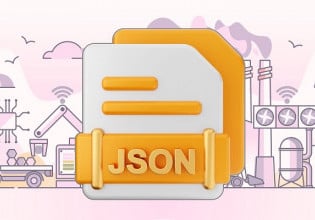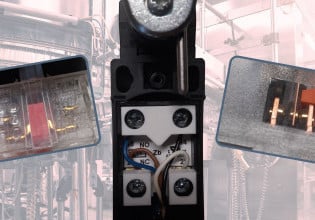New Raspberry Pi 5 Announced to Spur New Innovation in October
The engineers at the Raspberry Pi Foundation have announced a late October release of the newest flagship product, the Raspberry Pi 5, after 7 years of development.
The Raspberry Pi Foundation launched the first commercial Raspberry Pi, the model B, in 2012. Initially, it was intended to be a low-cost, compact device that could serve to make learning computer science more accessible to students worldwide. Perhaps the creators could have never imagined the large-scale success this device would have in the ensuing decade.
The New Raspberry Pi 5
These Pi devices are used across various industries outside of education, including home automation and even industrial applications with some models like the CM4. The team at the Raspberry Pi Foundation has not let this success lead to product stagnation however, and this is most evident in their announcement of the Raspberry Pi 5.

The Raspberry Pi 5. Image used courtesy of Raspberry Pi
Community and Manufacturing Partner
The Raspberry Pi foundation has improved the technical specifications of the product, which we will shortly dive into. However, I wanted to note aspects of this product that haven't changed per the astuteness of the foundation. Primarily, its focus on the community that has made the product a success hasn’t wavered.
For the first year, the company will only be selling directly to single consumers. This should avoid the price hikes and supply chain constraints that limited product output during the last few years. Furthermore, the foundation is utilizing the same manufacturing partner, Sony UK Technology Centre. Sony is within driving distance of the design center, which the foundation notes has helped better their product design for manufacturability. This is a key area where some companies settle for over-the-fence engineering between design and contract manufacturing operations. Therefore, it’s great to see the foundation keenly aware of the importance of strategic partnerships with manufacturing operations.

A semiconductor PCB populating machine center. Image used courtesy of Adobe Stock
New Features of the Pi 5
So, what does this new Raspberry Pi 5 offer that version 4 does not? That is why you’re reading this article after all, right?
Based on the initial release information, we can expect to see improved performance across the board (no pun intended) on the new model. The CPU is the quad-core ARM Cortex A-76 at 2.4GHz which offers 2-3x the performance of the previous generation. The GPU is also improved from the prior generation utilizing the 800 MHz VideoCore VII. The primary gain here is the new GPU allows for dual 4K HDMI display if you have dual monitors.
Perhaps the biggest departure and improvement from the prior generation is the RP1 silicon. This chip was designed in-house by the Raspberry Pi foundation, similar to the successful path taken by Apple with the M-series ARM chips. The RP1 facilitates the I/O between the GPIO pins and peripheral ports to the CPU. This includes the USB ports, Ethernet, and storage inputs. The result of the RP1 is a boost in I/O speeds across the board.

Close-up view of the RP1 chip. Image used courtesy of Raspberry Pi
Some other notable mentions include the camera interface and PCIe interface. The 2 × 4-lane MIPI camera/display transceivers have also been improved with a threefold bandwidth increase. The new PCIe 2.0 interface allows for high-bandwidth devices to be attached to the device.
Who Can Use This New Computer?
Really anybody with an interest with Linux-based hardware for hobbyist, industrial, or educational purposes. With a starting price of $60 for the 4GB RAM model and $80 for the 8GB model, the barrier to entry is low. So what are you waiting for? Get one on order soon!
To begin using this new board, many tutorials are available, and most functions that were possible on the version 4 platform are still likely to succeed on the Pi 5, but with improvements to speed, functions, and capabilities to make a more seamless engineering process.






